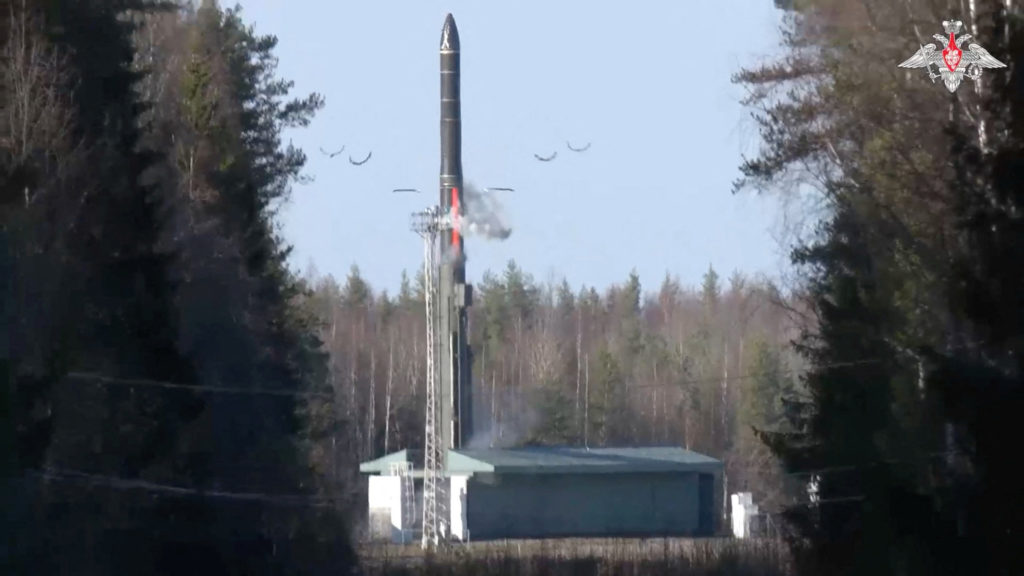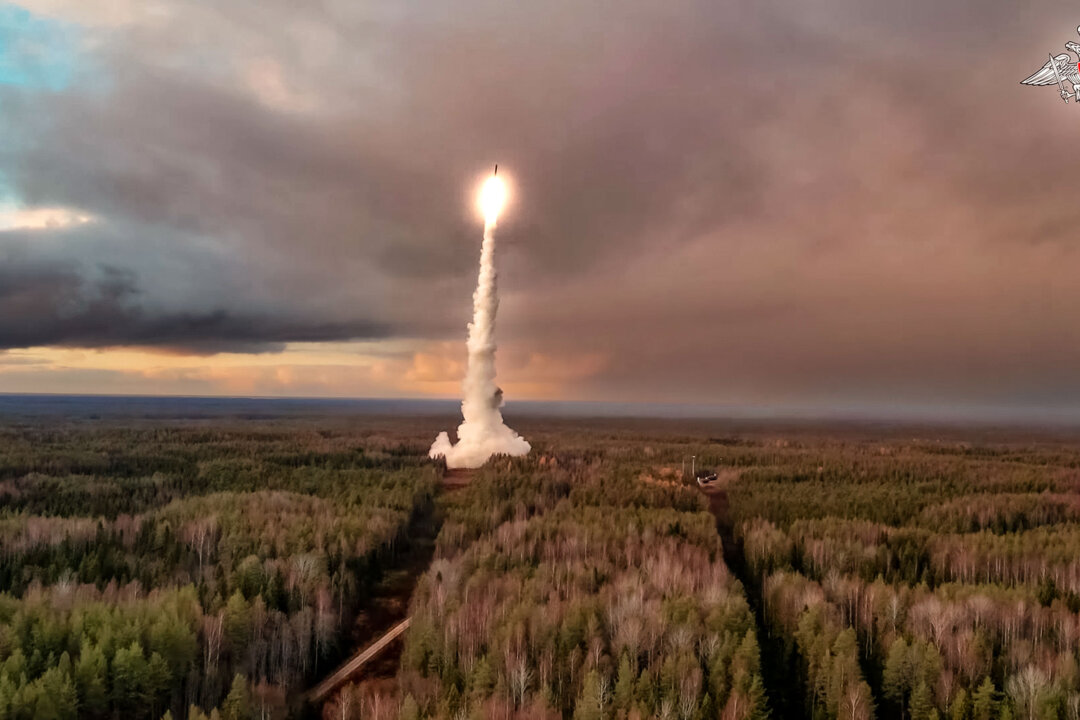Putin Oversees Extensive Nuclear Readiness Drills for Russian Forces
President Putin oversaw comprehensive nuclear readiness drills for Russian forces, testing all components of the nuclear triad, including land, sea, and air, and launching Yars and Sineva ballistic missiles.
Subscribe to unlock this story
We really don't like cutting you off, but you've reached your monthly limit. At just $5/month, subscriptions are how we keep this project going. Start your free 7-day trial today!
Get StartedHave an account? Sign in
Overview
- President Putin personally oversaw nuclear readiness drills for Russia's strategic forces, demonstrating the nation's military capabilities and preparedness.
- The exercises involved all three components of Russia's nuclear triad: land-based missile systems, submarine-launched ballistic missiles, and strategic aviation.
- Key elements of the drills included the successful launch of Yars intercontinental ballistic missiles and Sineva submarine-launched ballistic missiles.
- These comprehensive exercises were designed to test the operational skills of military staff and the effectiveness of Russia's command-and-control systems for nuclear forces.
- The drills underscore Russia's commitment to maintaining its nuclear deterrent and ensuring the readiness of its strategic forces in various scenarios.
Report issue

Read both sides in 5 minutes each day
Analysis
Analysis unavailable for this viewpoint.
Articles (3)
Center (0)
No articles found in the Center category
FAQ
The drills tested all three components of Russia's nuclear triad: land-based missile systems (Yars intercontinental ballistic missiles), submarine-launched ballistic missiles (Sineva missiles), and strategic aviation (Tu-95MS bombers).
The drills demonstrate Russia's military capabilities, maintain the readiness and operational skills of its strategic forces, test the effectiveness of command-and-control systems, and underscore Russia's commitment to maintaining a credible nuclear deterrent. These exercises validate the survivability and integration of the triad components under centralized control.
Russia is replacing Soviet-era missile systems with modern designs such as the Yars intercontinental ballistic missile replacing older Soviet missiles, and continues development on other systems like the Sarmat, although some programs face delays. The Strategic Rocket Forces have increased the share of modernized equipment to around 60-88%.
At the same time as Russia’s nuclear triad drills, NATO is conducting the Steadfast Noon exercise, focusing on nuclear deterrence training involving dual-capable aircraft. NATO emphasizes that this exercise uses no live nuclear weapons and is not directed at any country, testing procedures, safety, and coordination among member states.
These drills are part of Russia's ongoing efforts to maintain and modernize its nuclear triad, ensuring survivability and deterrence capability despite delays in some missile system deployments. The exercises showcase operational readiness of all triad legs under centralized command, aligning with Russia’s strategic goal of credible nuclear deterrence.
History
- This story does not have any previous versions.



